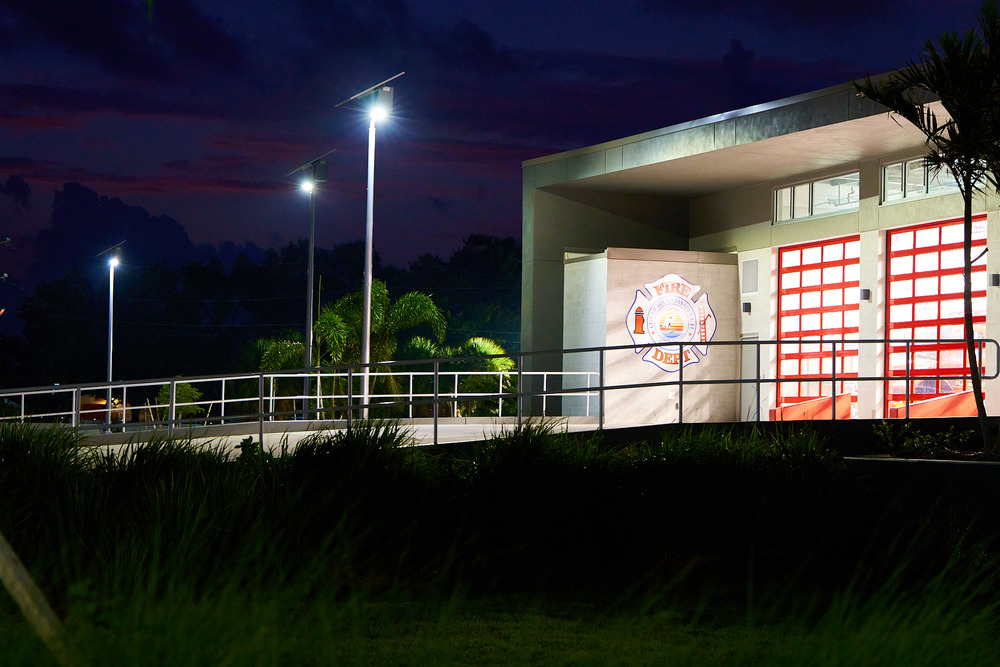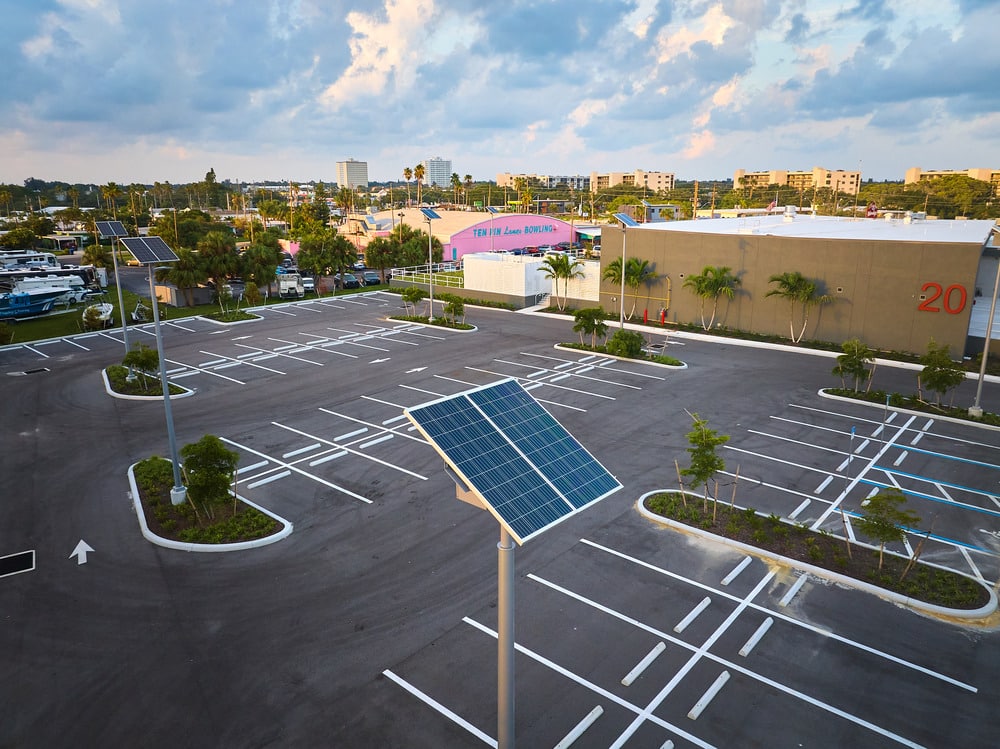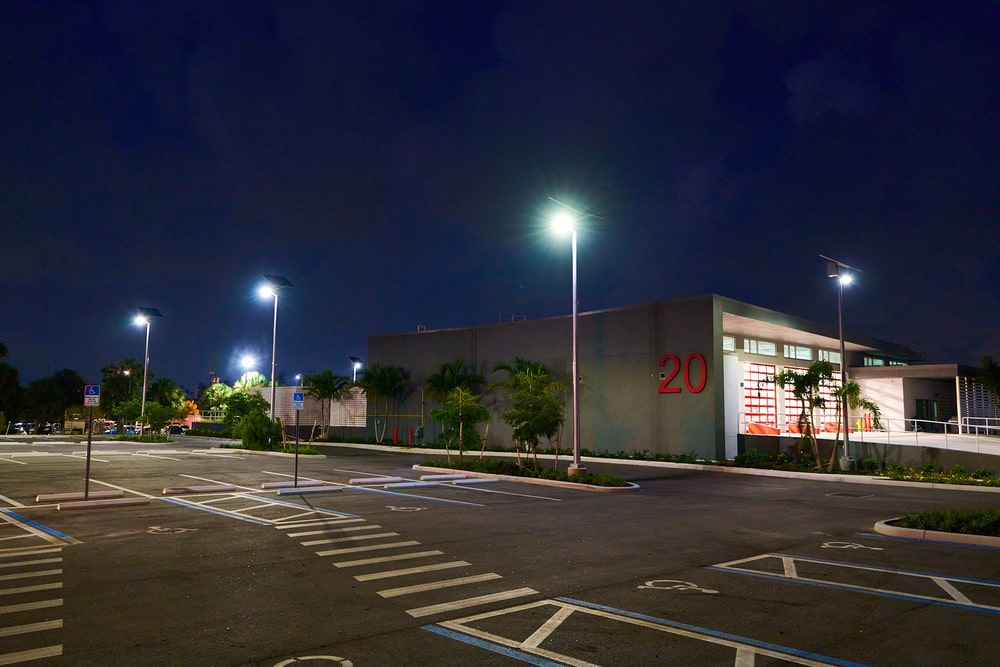
A lot can change in 50 years. When South Pasadena, Florida’s fire station was built in 1977, air conditioning wasn’t the norm. Hurricane and flood-proofing standards weren’t part of the building code. And firefighters were, if not by law, then by social expectation, male.
The community, home to 5,500 and sandwiched between Gulfport, Treasure Island, and St. Pete Beach, was long overdue for an upgrade. They finally got one earlier this year when crews moved into Fire Station 20—a state-of-the-art facility featuring four apparatus bays, six unisex dorms, a climate-controlled fitness area, and a parking lot lit entirely by solar power.
It wasn’t initially going to be. The City had used solar lighting before—another manufacturer’s systems can be found just down the street—but they weren’t impressed. For the fire station, reliable, high-quality light was essential, so they selected an AC-powered fixture known for its performance and advanced optics: Lithonia’s DSX0 Area Luminaire.

Solar didn’t enter the picture until architects began working with local agency Envision Lighting Systems. They saw the DSX0 fixture and proposed an alternative: the same one, only powered by Sol’s high-power EverGen-M solar engine. Their reasoning: Using solar would actually improve the lights’ reliability as they would not be connected to the grid (and would, therefore, not be affected by power outages).
As a vital component of the city’s Emergency Medical Services (EMS), the lights’ ability to remain operational when the grid goes down is particularly advantageous. The station will serve as an emergency response center during hurricanes and other catastrophic events, and the lights will provide much-needed safety to first responders.

Being ‘off-grid’ also meant the City could avoid much of the time and cost typically incurred with a conventional lighting installation. There was no trenching, cabling, or wiring required. Installers simply dug holes where they wanted the lights to go, fitted them with concrete, and bolted down the poles.
The final installation comprises seven EverGen-M solar lights, each outfitted with two PV panels, four gel batteries, and a 60W DSX0 luminaire. Proper solar sizing ensures the lights will operate as intended year-round, allowing firefighters to do their work as quickly and safely as possible. “The lights look really nice and give off plenty of light,” says Sanchelle Mercer, an architect at WJ Architects who worked on the project. “They are great for anyone wanting a cost-effective way to utilize solar on their project.”
